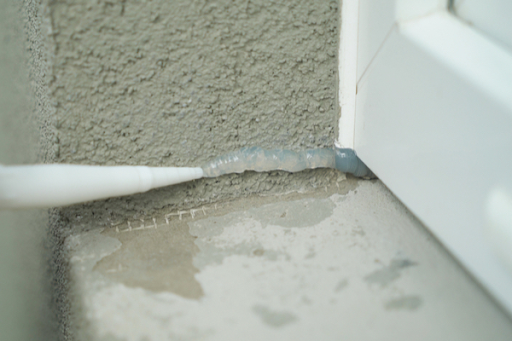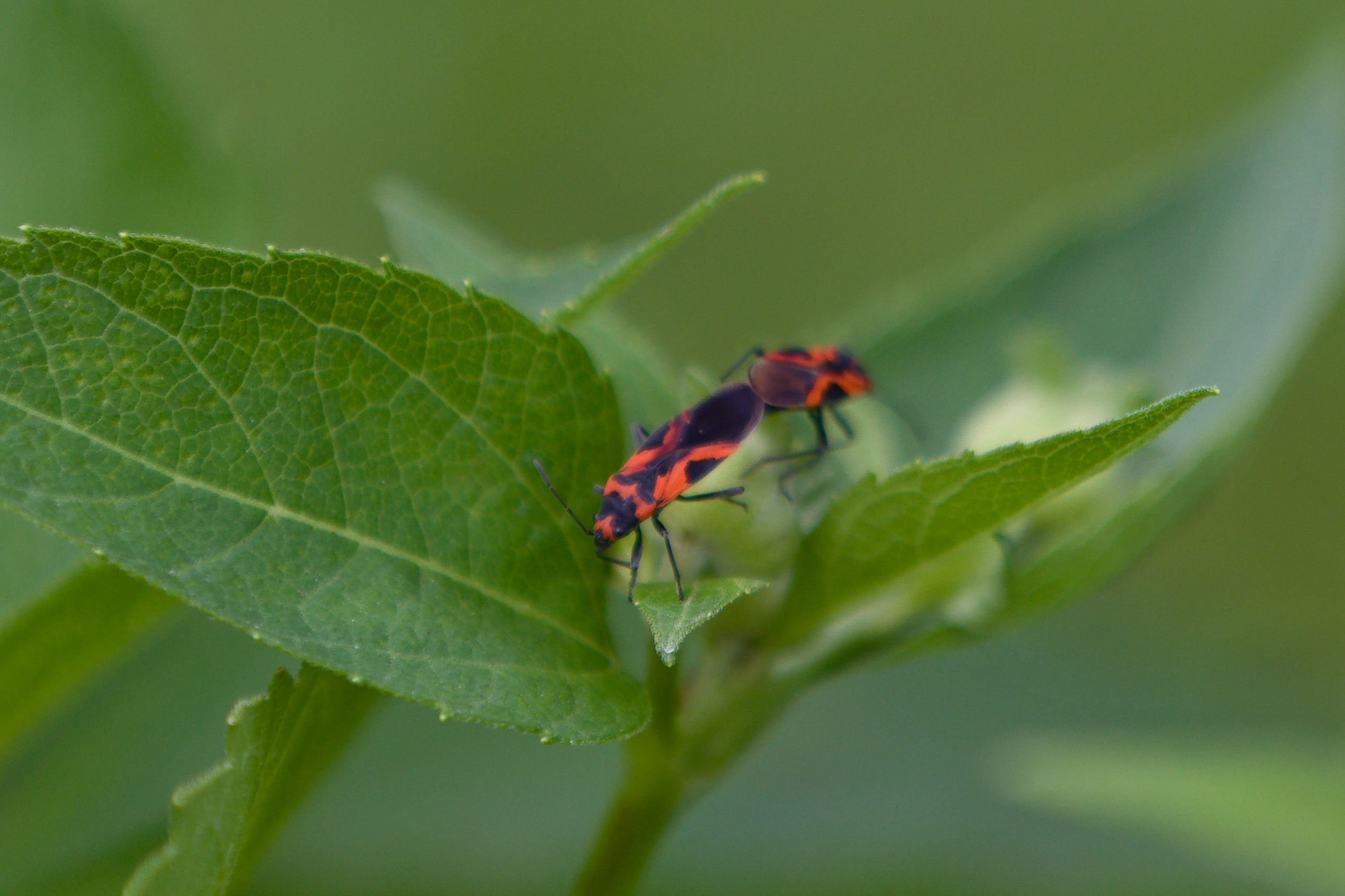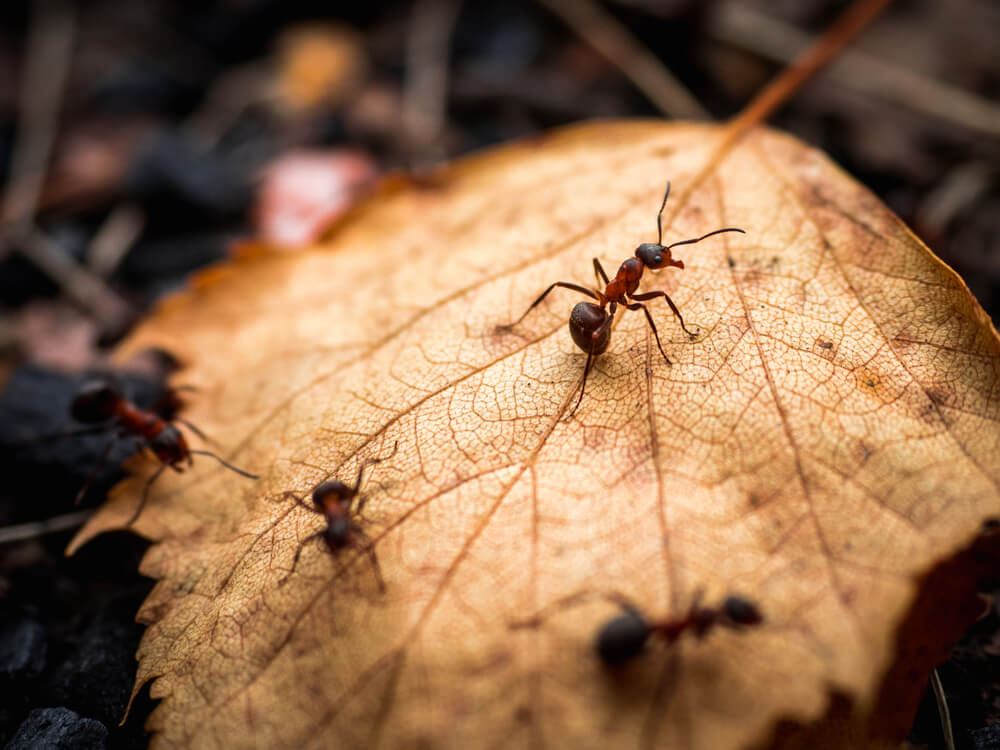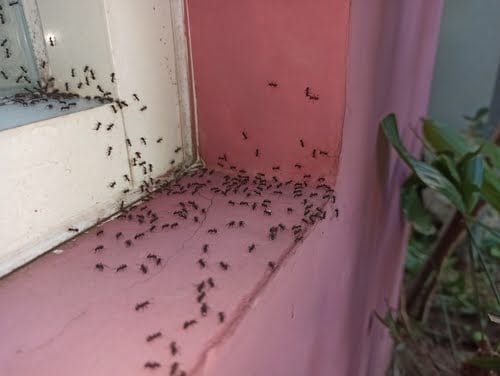Even if you don’t know them by name, you know them by sight. These small black and red bugs seem to be everywhere in the spring and fall. Homeowners are particularly familiar with boxelder bugs because these pests congregate in large groups around houses.
Knowledge is power; learning more about boxelder bugs can help keep them away from your space. Here’s your guide to what boxelder bugs are, what they eat, and why you may find them swarming around your space.
Boxelder Bug Habitat: Where You Might See Them
Boxelders are native to the western United States, but it isn’t uncommon to spot them in the eastern U.S. and some parts of Canada, too. Boxelder bugs reside in any area where boxelder trees are present.
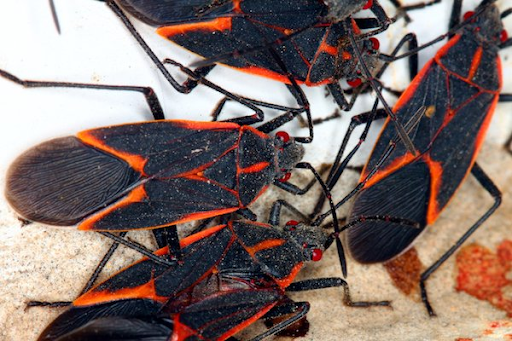
What Do Boxelder Bugs Eat?
Boxelder bugs feed almost exclusively on seeds from trees in the Acer genus. That includes maple, ash, and, of course, boxelder trees. Their diet ties them closely to where these trees grow, which is why infestations often occur near wooded areas or tree-lined properties.
Boxelder Bug Behavior: Seasonal Shifts
Boxelder bugs are highly attuned to changes in temperature and daylight which means they behave differently throughout the year, especially in the spring and fall:
Why Do Boxelder Bugs Show Up in the Spring?
After spending the winter in a dormant state, boxelder bugs emerge as soon as temperatures rise. Their first mission? Food. These hungry bugs seek out fallen seeds and low-growing vegetation to refuel after hibernation, which is why you’ll often see them clustering in large numbers in early spring.
Once they've had their fill, boxelders begin to reproduce. By mid-summer, they lay eggs on the trunks, branches, and leaves of female boxelder trees. As the trees bloom and drop seeds, newly hatched nymphs get immediate access to the food they need to grow.
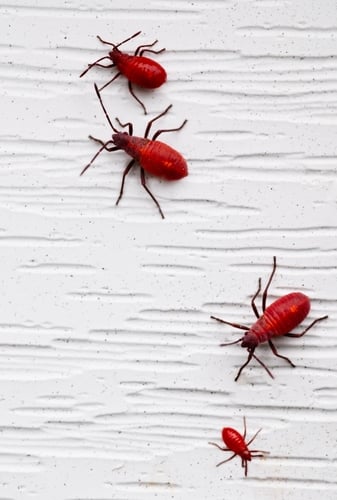
Boxelder Bug Nymphs
Why Do Boxelder Bugs Swarm Around My House in the Fall?
Once boxelder bug mating season is over, they seek out warm shelter as the temperature drops. When they find a spot that’s warm and safe, boxelders enter a state of hibernation-like dormancy until early April.
In the months before winter, boxelders are attracted to homes where they can stay as warm as possible for as long as possible. Naturally, they are drawn toward homes with western and southern exposure. They also tend to congregate on windows. Light paint reflects the sun more than darker paint, so these bugs are often more attracted to light homes.
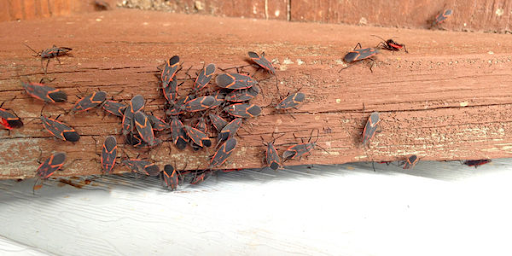
Are Boxelder Bugs Poisonous?
No. Boxelder bugs are not poisonous and do not harm people, plants, or structures. However, if you have a particularly severe infestation, boxelders may stain surfaces with their droppings. Threatened or dead boxelders produce a foul smell, which is unpleasant but not poisonous or harmful.
What are Boxelder Bugs Attracted To?
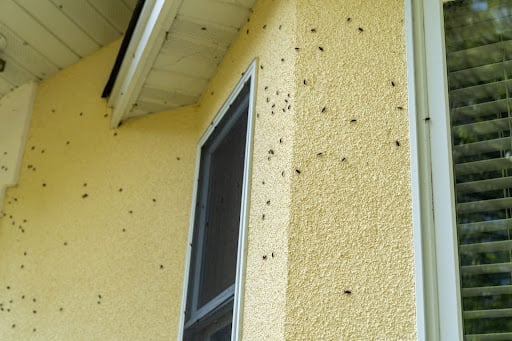
Boxelder bugs want warmth and shelter. If you feel like boxelder bugs are targeting your home, here’s a list of enticing attributes you may have:
- Eastern or Western sun exposure
- Light colored house paint
- Windows low to the ground
- Old window stripping prone to cracking
- Cracks around your windows and door frames
- Maple, ash, and/or boxelder trees in your yard
How to Get Rid of Boxelder Bugs

After you’ve vacuumed up the bugs, thoroughly wash down the area where they were congregating. Use soapy water or even a little ammonia. Spraying soapy water directly on boxelderbugs will remove their waxy coating and cause death. It also helps remove the pheromone that the bugs secrete to tell others to congregate.
Once They’re Gone, How Can I Prevent Boxelder Bugs From Coming Back?
The best way to keep boxelder bugs out is to seal off the spots where they like to sneak in. Start by inspecting common entry points like windows, door frames, siding, utility lines, and vents. If you find any gaps or cracks, seal them with caulk.
Boxelders can slip through small openings. Replace worn weatherstripping, patch damaged screens, and consider upgrading older windows if needed. Don’t forget to check baseboards and flooring for gaps, too. A thorough seal-up now can prevent a full-blown invasion later.
